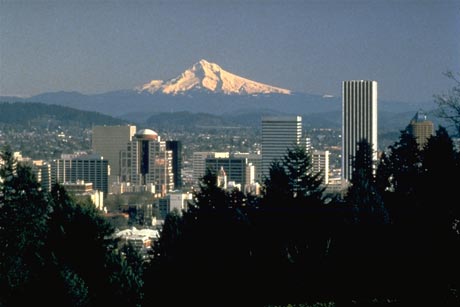|
 Improving Life in the World's Megacities
Improving Life in the World's Megacities
Toward a Livable Community “We neglect our cities to our peril, for in neglecting them, we neglect the nation.” — President John F. Kennedy, 1962
For decades, environmental concerns have been a major force in American society, but in the last few years these issues have taken a new direction through what is called the “smart growth” movement. Last year, in local elections across the country, voters placed more than 200 initiatives on the ballot aimed at controlling how land is developed around cities, and 70 percent of these measures passed. Time magazine, a bellwether of popular consciousness, recently ran a cover story summarizing the controversy associated with growth under the title “The Brawl over Sprawl.” The problem of “suburban sprawl” in America is that more and more people in search of the good life — a house of one's own and a bit of land around it — have moved out further and further from city centers into suburban housing developments. With millions able to afford this part of the American dream, a new set of problems arise: farmland is sold for housing, woods turn into shopping centers and fast-food restaurants, environmental resources generally are used less efficiently. And with commuters driving cars further to work, roads clog, traffic slows, and air pollution increases. The difficulties that go along with uncontrolled growth are not limited to the United States, however. As anyone who lives in one of the “megacities” of the developing world can testify, the flight from rural poverty to the promise of a better life in the cities has often led to the rise of shantytowns, squatter settlements, and rings of haphazard development around city cores. In the United States the cause is primarily a side effect of affluence; in the developing world, the search for affluence is the principal driving force. But in both cases the results — chaotic growth and the problems that accompany it — are similar. This book, then, is an effort to explore the current thinking behind the smart growth movement, examine its historical roots, and draw some tentative international connections. We have chosen the title “Livable Communities” because this term has become a shorthand way of stating the basic goal: satisfying human needs in an urban, communal, and environmentally sound context. Ideas about the best ways to make cities work better for everybody have been debated, of course, by city planners and urbanists for centuries. This discussion is likely to become more heated in the next century as urban conglomerations (megacities) of ten million and more people become common and the associated problems grow exponentially. Experts recognize a need to protect natural surroundings insofar as practical from uncontrolled urban growth, to rethink the tendency of people to isolate themselves in suburban housing tracts, and to come up with practical solutions acceptable to rich and poor alike. Most agree on the goal of a vibrant urban culture that spurs human interconnectedness, economic initiative, and a sense of personal well-being. Enlightened architecture, planning, zoning, “green” technologies — these are some of the tools and strategies that will determine the fate of the people who live in cities over the next hundred years. In the keynote essay, adapted from a recent speech by Al Gore, the American Vice President spotlights successful efforts across the United States to achieve sustainable growth. Gore emphasizes local decision-making on these matters and the compatibility between smart growth and economic strength. “Promoting a better quality of life for our families need never come at the expense of economic growth,” as he puts it. In the second essay, urban affairs writer Molly O'Meara, of the Worldwatch Institute in Washington, D.C., finds hope in the enlightened policies of two different cities — Portland, Oregon, and Curitiba, Brazil. “In their struggles to overcome the pervasive problems of traffic, pollution, chaotic development, and psychological stress,...these mid-sized cities serve as encouraging models,” she writes. The next selection is excerpted from an essay written 30 years ago by the late Lewis Mumford, an American urban critic whose ideas seeded today's smart growth movement. Mumford — who once said, “Our national flower is a concrete cloverleaf” — argues that intelligent planning, particularly the preservation of green space in cities and in surrounding areas, can lead to a civic culture that allows for both nature and the automobile. In the concluding interview, Janice Perlman, founder and president of the Mega-Cities Project, based in New York City, agrees with Mumford. “If you accept that human beings are part of life on this planet,” she says, “then concentrating them in cities is the only way to free up the space for ecological reserves, whether they're marshlands or forests or jungles, and the only way we're going to keep agricultural land.” Perlman's main concern, however, is the relationship in large cities between rich and poor, and, above all, the ways in which seemingly disparate cities in all nations of the world can share their best ideas and make contributions to one another's well-being. The search for common solutions is the theme of this booklet. We hope it spurs discussions about the opportunities and distresses of the urban environment in a time when historical and economic trends mean that more and more of us will be living in larger and larger metropolitan centers.
Return to Publications Homepage Return to IIP Homepage |